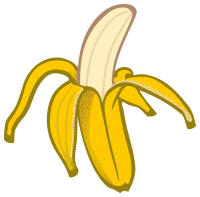Question: What atoms are in sour foods?
Hypothesis: High concentration of loose hydrogen atoms are found in the most sour foods.
Supplies: 5 Cups, 5 Food Bottles, 5 Blank Labels, 1 Dye Bottle, Microscope, Marker & Food (Lemon Juice, Vinegar, Orange Juice, Milk and Water)
Steps: 1. Label each cup by clicking each blank label once.
2. Click on food bottle 1 and add five drops of food by clicking on cup 1 five times.
3. Put food bottle 1 back by clicking where you picked it up.
4. Repeat Steps 2 and 3 for food bottles 2, 3, 4 and 5.
5. Click on dye bottle and add one drop to each cup by clicking once.
6. Put dye bottle back by clicking where you picked it up.
7. Click continue to view chart for explanation of each dye color.
8. Drag the cups to order them from high concentration to a low concentration of loose atoms.
9. Click continue 2x, then click on each cup to find out what each food is, from most sour to least sour as follows:
a. Lemon Juice
b. Vinegar
c. Orange Juice; Apple
d. Milk; Banana
e. Water
10. Click continue to view pictures with information on sour foods.
Results: I learned that sour foods contain high concentration of loose hydrogen atoms. Therefore, food with high concentration of loose hydrogen atoms are the most sour like lemon juices and vinegar while food with a low concentration of loose hydrogen atoms are the least sour like milk and water.
Explanation:
Answer these questions:
1. What are acids and bases? Acid is a chemical that can react with a base to form a salt. Base is a chemical compound that unites with an acid to form a salt.
1. What are acids and bases? Acid is a chemical that can react with a base to form a salt. Base is a chemical compound that unites with an acid to form a salt.
Student Notes Only: Salt - A substance that consists of ions that have opposite electrical charges.
2. What is a molecule? Molecule is a combination of two or more atoms.
3. Why is pH important in the ocean? For control (balance).
Holes in Bread
Question: What molecules make the holes in bread?
Question: What molecules make the holes in bread?
Student Notes Only: Molecules - are tiny particles that make up everything around us.
Hypothesis: Sugar molecules make the holes in bread.
Supplies: Yeast, Measuring Spoon, Cup, Tube, Sugar, Water Bottle, Warm Water, Stick, Timer, Flashlight & Microscope
Steps: 1. Use spoon and take 3 scoops of yeast from the cup and pour into the tube.
2. Use spoon and take 3 scoops of sugar from the cup and pour into the tube.
3. Pick up the warm water bottle and add 8 drops of water into the tube, then return the warm water bottle back to its place.
4. Use the stick by clicking on it and moving it to the left and to the right to stir the yeast and sugar into the water until the water is the same color as the yeast.
5. Wait a few minutes for the reaction in the tube to take place, then continue.
6. Shine the flashlight on the side of the tube by clicking its power switch.
7. Watch the tiny bubbles streaming up the side of the tube.
8. Press continue to view the explanation on what is going on in the tube.
9. Press continue to view the answer to what molecules make the holes in bread.
Results: From the holes in bread experiment, I learned that the chemical reaction of yeast and sugar combined will form new molecules, carbon dioxide gas molecules and alcohol molecules. The carbon dioxide gas molecules then makes the tiny bubbles. Therefore, to answer the question, "What molecules make the holes in bread?." My answer would be the carbon dioxide gas molecules.
Explanation:
Answer the question:
1. What gas causes the bubble? The carbon dioxide gas molecules make tiny bubbles.
2. How was the gas produced? Because yeast is a living thing that feeds on the sugar molecules, when combined together, it breaks the sugar molecules apart into new molecules forming the carbon dioxide gas molecules and alcohol molecules.
3. How does CO2 get in the ocean? The CO2 throughout the earth is constantly in flux. CO2 isn't trapped in the atmosphere or in the land for any length of time, as it becomes absorbed largely into the ocean (see Carbon Cycle for detailed explanation).





2 comments:
This can't work as a matter of fact, that is exactly what I believe.
top [url=http://www.001casino.com/]casino online[/url] hinder the latest [url=http://www.casinolasvegass.com/]free casino bonus[/url] free no set aside perk at the best [url=http://www.baywatchcasino.com/]casino perk
[/url].
Post a Comment